After achieving great search engine results for these clients, we put together these 4 SEO strategy case studies in various niches. Let’s take a look at how we accomplished this growth in rankings. Read on to learn a few tips and tricks that are ready to be applied to your next WordPress SEO project.
If you’re interested in getting an instant SEO service pricing quote, feel free to take our easy 5-question SEO quiz here.
1. Pet Niche Site SEO Results
Nothing hurts more than investing a huge amount of time writing content and creating pages that get almost no traffic. In this case, the owners opened their site way back in 2013, built up a significant number of pages, but still couldn’t get organic visitors.
Before:
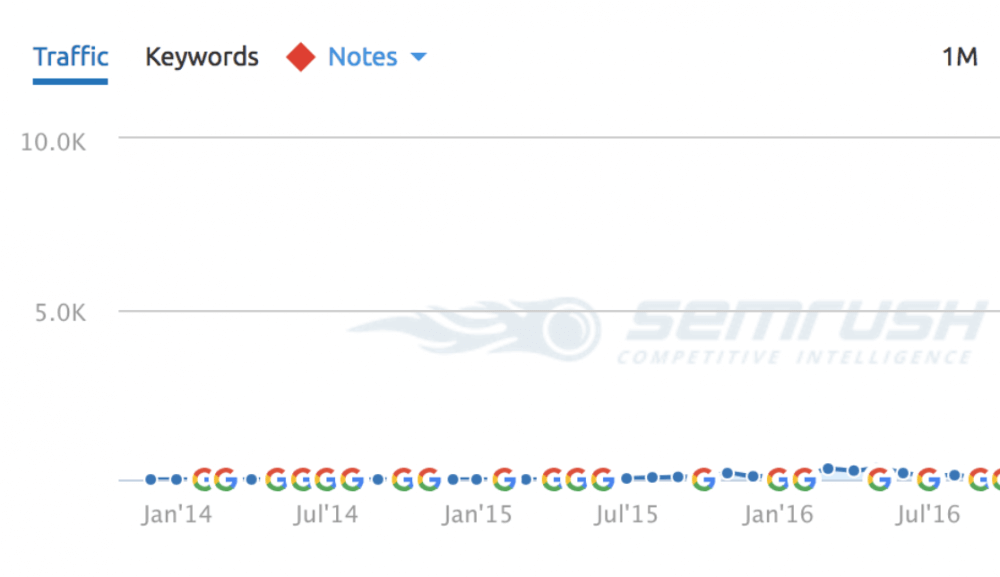
SEO Audit
When we take on a client, we first scout the site to check for major issues affecting the site’s rankings. Luckily, this site had no penalties, but it was still being outranked in target keywords. The site didn’t boast a lot of links (either internal or external) so we didn’t have a problem with over-optimization. While Ahref shows performance on organic keywords, that doesn’t tell the whole story. The screenshot from Ahref below shows that the site used the top 100 keywords in its niche. That didn’t guarantee a top 10 ranking. Interestingly though, the screenshot pointed to some keywords that were ripe for the picking.
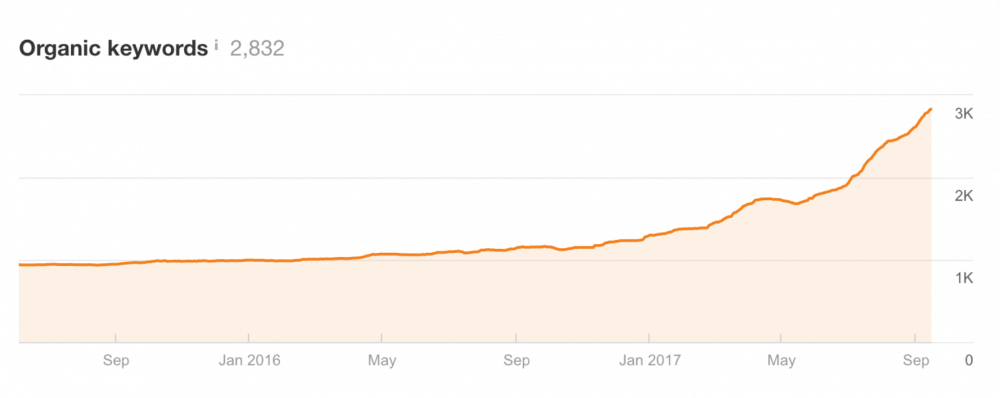
Second and Third Page Ranking Analysis
Our initial analysis helped us identify keywords ranking somewhere in the second or third page of Google results, but not in the top positions where most traffic lives. Identifying these “Easy Win” keywords helped us push them up through the ranks to the first page, boosting traffic to the site.
For the pet website, we had 1001 “easy win” keywords to promote through the ranks. These keywords lay in the 2-3 pages that were getting between 10 to 9,000 monthly searches. The keywords had a CPC ranging from $.50 cents to $6. The site had lots of potential, but since it was yet to punch through to page 1 on Google, it didn’t get a lot of attention.
Content Gap Analysis
A content gap analysis revealed 103 keywords used by competitors, which the site wasn’t targeting. These keywords had similar PPC costs to the easy-win keywords. Traffic volume wasn’t too bad either, varying between 150 – 2900 monthly searches. We worked with the client to identify high-priority keywords. The client’s industry knowledge was quite useful in this exercise, showing exactly why we work with customers to understand their underlying business goals. (Learn more about our SEO service here!) Here’s what we did in the campaign.
Month 1:
- 1 Guest Post Backlink – Exact match on easy wins
- 1 Guest Post Backlink – Exact match (another kw) on another easy win
- 1 X 1000-Word Blog Post – Informational keyword focus based on industry trends
- Web 2.0 Citations – Partial match, brand, naked anchors
Month 2 (similar to the first month):
- 1 Guest Post Backlink – Money keyword variation
- 1 Guest Post Backlink – Money keyword variation
- Web 2.0 Citations – Partial match, branded, naked anchors
- 1 X 1000 – Word Blog Post – Money keyword
Month 3 (similar but with some diversity for the anchor text):
- 1 Guest Post Backlink – Branded
- 1 Guest Post Backlink – Branded
- Web 2.0 Citations – Branded, URL, Partial match mix
- 1 X 1000-Word Blog – Content gap keyword, high volume
Results
The site had a decent amount of content, allowing us to focus on easy-win opportunities. We focused on the easy-win keywords. Within 3-6 months, they were able to get page 1 for these keywords. It was only natural that traffic went through the roof.

Takeaways The results above came after only 6 months of work. The site has lots of potential and in the next 6 months we’ll begin working on a few high-profile keywords, setting the site up for niche domination!
2. Foreign Language Local SEO in a Major City
Background
We took a leap with this one because the site is both non-US and non-English. This French-Canadian site was an excellent test to see whether our WordPress SEO strategy would hold up for a non-English site.
Audit
The first thing we do is an audit. In this case, there were no penalties but traffic was low. The money keywords were slightly over-optimized with 1 exact match at 29% and another at 25%. While this wasn’t a concern, since they didn’t have many links, it was still a consideration.
Easy Wins – Finding the “Hidden Treasure”
We found fewer easy-win opportunities on this site compared with others we’ve worked on, but that didn’t trip us up because it’s local. The site’s low traffic still converted better than other niches because of how focused the keywords were on users interested in the services. We uncovered 43 keywords generating between 20–1000 monthly searches with a CPC of $.20 cents to $5. We chose to focus on keywords in the $4–$5 range.
Competitive Gap
31 terms were ripe for the picking, each generating between 20–1600 monthly searches and a CPC between $.20 cents to $5 a click. Some of these were local areas that were not targeted. Others were popular appliance names. Working with that site and others we identified great keywords for services they were offering but that didn’t appear on the site. We laid all these out for the client. We also noted that the site had some SEO done before signing up with us.
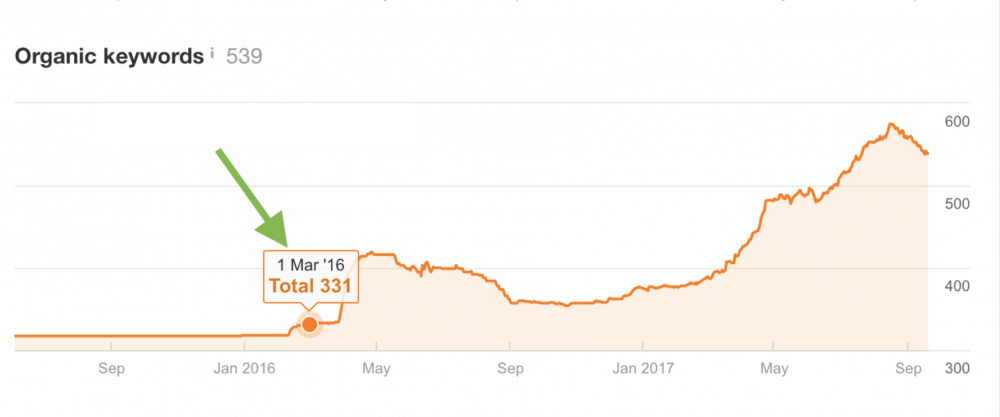
They achieved some significant results with a nice bump in rankings. Inexplicably, they didn’t push further with their strategy before coming to us. After working with us, the results were evident, as seen in the graph below. Remember, we had very limited options with this site. It is an international and foreign language site, so we tweaked our strategy to look like this:
Month 1- 6 (same strategy for the first 6 months)
- Mix of Natural, Branded, and Exact-Match Keywords
- 1 Guest Post Backlink
- 1 X 1000-Word Blog Post
The results speak for themselves:
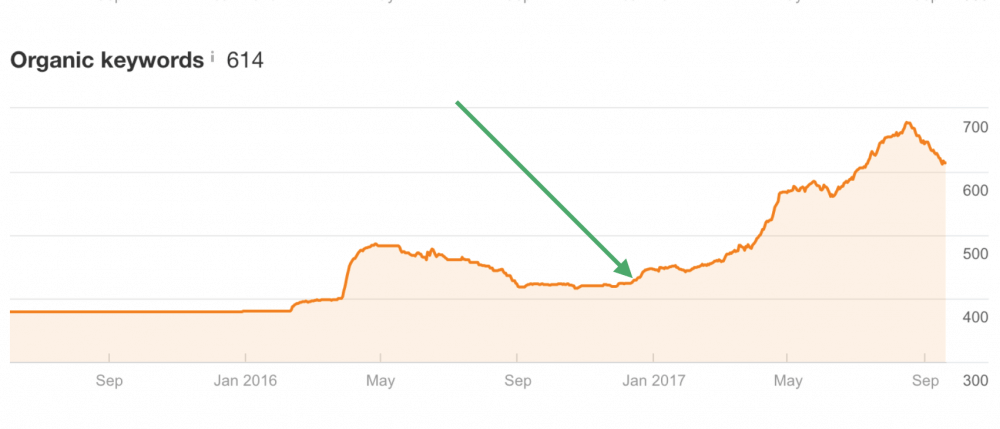
You might find it interesting that they invested $5,300 in SEO and Ahref shows that they have a PPC cost of $8,000 per month. That’s about $96K per year if they went the PPC way. Some nice savings there, wouldn’t you say?

Takeaway
Consistency is key. From all the charts, you can see that sticking to effective WordPress SEO services guarantees results. When the clients stopped taking action on their SEO strategy, they slumped in rankings. When they picked it up again, they got back on the gravy train. Our WordPress SEO strategy allows you to uncover big wins for consistent results. No matter your niche, we probably have an optimal package for you. What’s really important is focusing on optimally TARGETED traffic rather than on tons of traffic.
3. Niche E-Commerce SEO Case Study
Background
The client was an online retailer selling items ranging from $50 to a few hundred dollars each. They started doing SEO with us and we helped them with blog content and link building in mid-2017.
Audit
The online retail store had very little traffic when they came to us. Luckily, there were no glaring issues like over-optimization, as we handled all their SEO.
Easy Wins Analysis
We identified 76 key targets, mostly at the bottom of page 1 through to page 3. The CPC for the keywords ranged between $.60 cents and $2.50. The best news for the client was that most of the keywords were a mix of homepage keywords, product pages keywords, and blog content keywords, all of which were highly searched by prospective customers.
Competitive Gap Analysis
Doing a competitive gap analysis for e-commerce sites is a bit different than doing it for other types of sites. You end up uncovering tons of product names, some of which you might not sell. Also, e-commerce stores have very little content in their product pages, making them a bit trickier to rank. Working closely with the client, we identified keywords worth targeting. We then proceeded to create content for the keywords and the client loved each content piece.
Months 1 – 6
- Focused on Easy Wins
- Keyword Variation
- Homepage and URL Branding
- 4 X 1,000-Word Blog Posts
With that, we saw the following results: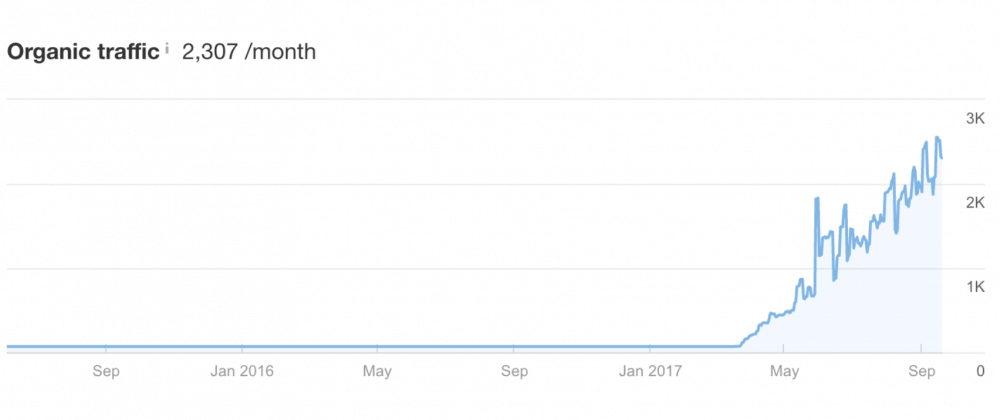
Going Forward
After getting the long-form blog content ranking, we were able to do in-depth link building, pushing the ranking of the content even higher. We now have lots of content to work with, as opposed to working with product pages, and that’s just the beginning! By following our tested strategy, we busted through the rankings.
Takeaways
Just like any other website, e-commerce needs content to rank for valuable keywords. Content pages are easier to rank and they allow you to link to your internal product pages. Once you have the right content, getting good backlinks is almost guaranteed.
4. SAAS Company SEO Case Study
Background
The client was a software as a service company handling big contracts. Although the company targeted small search volume keywords, they were still valuable keywords. One conversion from any of the keywords means big money for the client.
Audit
The site had a decent amount of content, full product pages and a blog. That did not do a lot to improve their marginal traffic or rankings. Luckily, the site had no penalties or over-optimization. They didn’t have any links coming in though. The audit told us we had to first get link equity for the site and make sure the client published consistent content on the blog.
Easy Wins
A few easy-win terms were present on the first page, but in such a profitable industry, getting a few clients on board could translate to hundreds of thousands of dollars in extra revenue for the company. Keywords in the niche went for upwards of $130 per click. We identified 114 search items with volumes of 10–40 searches a month. The average CPC for the keywords was $20. Most of the easy-win terms were on the second or third page, and we knew right then that we wouldn’t see remarkable traffic gains. We did however know that the client would see an impressive spike in the sales, revenue and profit graphs.
Competitive Gap
Our analysis uncovered 301 terms with monthly search volumes of 300–1,000 monthly searches, all with an attractive CPC. There were a lot of brand names in the competitive space, although we did manage to give the client lots of golden nuggets.
Strategy
We didn’t make a lot of variations from our SEO strategy.
Month 1
- 1 Guest Post Backlink – Exact-match with easy-win keywords
- 1 Guest Post Backlink – Exact-match with other easy-win keywords
- 1 X 1,000-Word exact-match content gap blog post
- Naked, brand, and partial keyword match
Month 2 (More or less the same thing)
- 1 Guest Post Backlink – Exact-match with easy-win keywords
- 1 Guest Post Backlink – Exact-match to easy-win keywords in product page
- Branded, URL, partial keyword match
Month 3 (Different keywords)
- 1 Guest Post Backlink – Exact-match keywords
- 1 Guest Post Backlink – Partial-match product page
- Branded, URL, Partial keyword match
- 1 X 1,000-Word Blog Post – Content gap keyword
After 2 months of link building, most of our changes were yet to take effect, but we saw a huge spike in rankings:
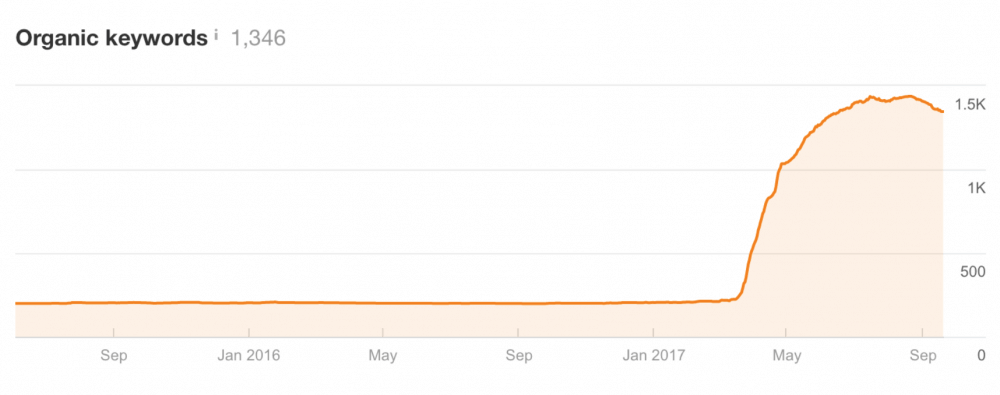
Traffic wouldn’t take long to catch up:
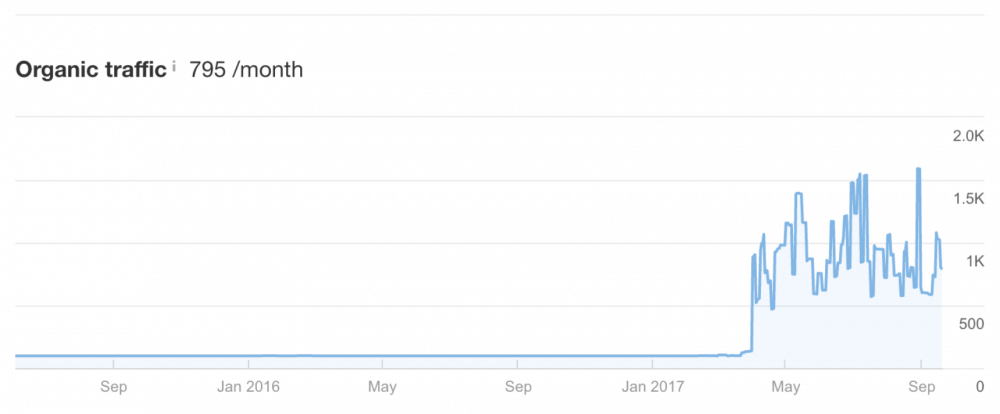
And then the money came:

Takeaway
If you have lots of content but it’s hard to rank, it’s time to build a high-quality, diverse link portfolio. Adding links to your content is your guaranteed fast-track route to top rankings.
Conclusion
You can already see that sticking to a strategic plan, even though it’s time intensive, gets you the best results in the shortest period of time. All the clients here are running one of our WordPress SEO campaigns. We encourage everyone to be consistent with their SEO tactics for at least 6 months before results start accelerating.
If you’re interested in getting an instant SEO service pricing quote, feel free to take our easy 5-question SEO quiz here.
Do you have any questions? We’d love to answer them in the comment section!

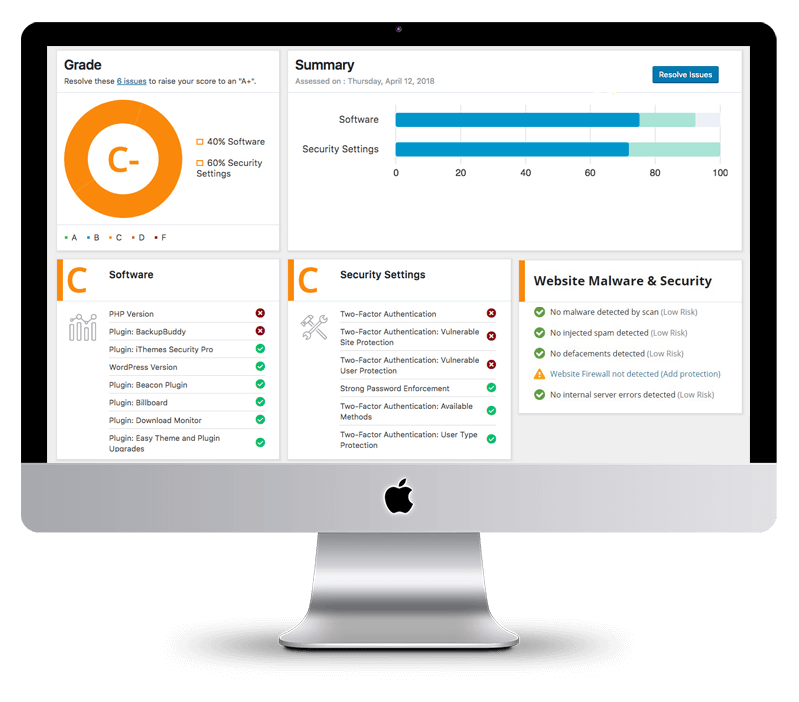
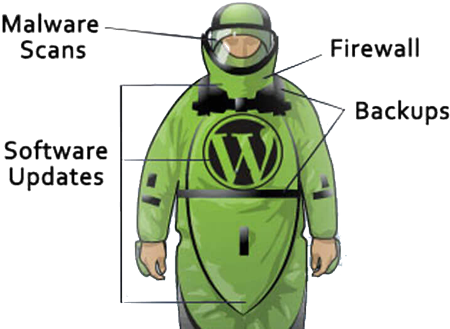
Hi, Thankyou so much to share a very useful information to us about SEO.
This is very useful information for SEO. I will also follow these above technique on my new website.
For me, SEMRUSH is costly so I use KWFINDER. Is it ok to use kwfinder for finding backlinks and keywords?
Hey, first of all, Thank you so much for this information about SEO and it’s very impressive and very helpful for me once again Thank you.:)